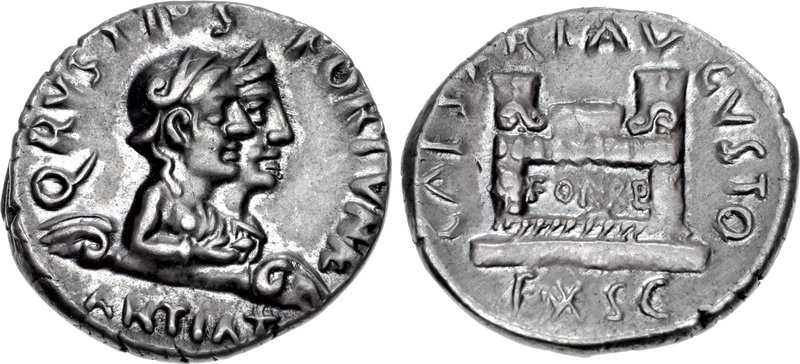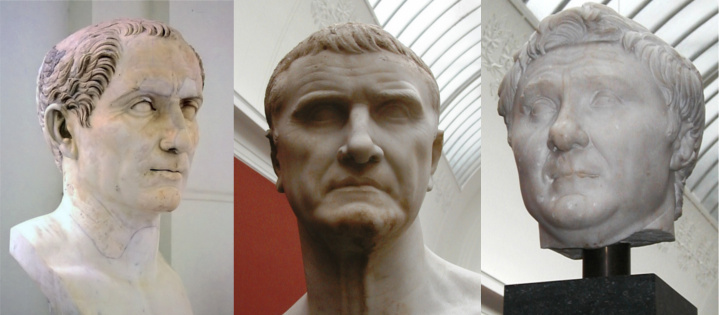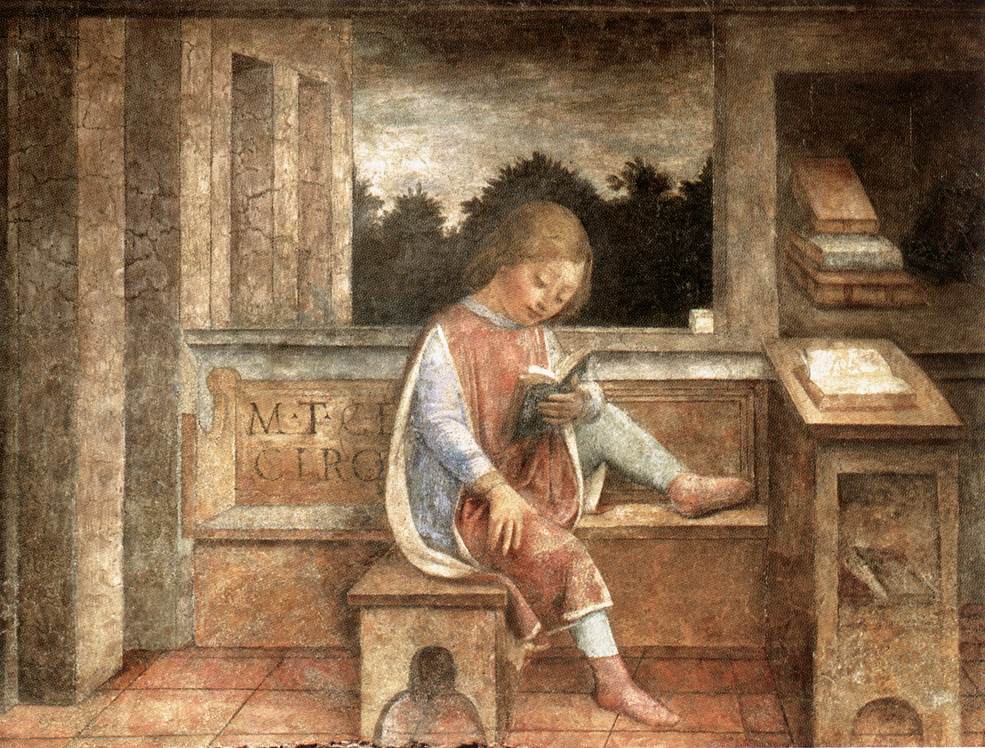|
Rustia Gens
The gens Rustia was a minor plebeian family at ancient Rome. Members of this gens are first mentioned toward the end of the Republic, and a few of them achieved prominence in imperial times, with Titus Rustius Nummius Gallus attaining the consulship under Tiberius in AD 34.''Dictionary of Greek and Latin Biography and Mythology'', vol. III, p. 680 ("Lucius Rustius"). Origin The nomen ''Rustius'' seems to belong to a class of gentilicia of Umbrian derivation., and one of the Rustii held high office at Interamnia Nahars in Umbria. The nomen ''Rusius'', found in a handful of authors and inscriptions, may be an error for ''Rustius'', as may ''Ruscius'', although the latter may have been a variant of '' Roscius''. Praenomina The main praenomina of the Rustii were ''Lucius'' and ''Titus'', both of which were among the most common names throughout Roman history. There are also instances of ''Gaius'', '' Marcus'' and ''Quintus'', also very common names. Branches and cognomina The on ... [...More Info...] [...Related Items...] OR: [Wikipedia] [Google] [Baidu] |
Gaius (praenomen)
Gaius () is a Latin praenomen, or personal name, and was one of the most common names throughout Roman history. The feminine form is Gaia.Chase, pp. 174–176. The praenomen was used by both patrician and plebeian families, and gave rise to the patronymic gens Gavia. The name was regularly abbreviated C., based on the original spelling, Caius, which dates from the period before the letters "C" and "G" were differentiated. Inverted, Ɔ. stood for the feminine, Gaia.''Liber de Praenominibus''.Quintilian, ''Institutes'', i. 7. § 28. Throughout Roman history, Gaius was generally the second-most common praenomen, following only ''Lucius''. Although many prominent families did not use it at all, it was so widely distributed amongst all social classes that ''Gaius'' became a generic name for any man, and ''Gaia'' for any woman. A familiar Roman wedding ceremony included the words, spoken by the bride, ''ubi tu Gaius, ego Gaia'' ("as you are Gaius, I am Gaia"), to which the bridegroom ... [...More Info...] [...Related Items...] OR: [Wikipedia] [Google] [Baidu] |
College Of Pontiffs
The College of Pontiffs ( la, Collegium Pontificum; see '' collegium'') was a body of the ancient Roman state whose members were the highest-ranking priests of the state religion. The college consisted of the '' pontifex maximus'' and the other '' pontifices'', the ''rex sacrorum'', the fifteen ''flamens'', and the Vestals. The College of Pontiffs was one of the four major priestly colleges; originally their responsibility was limited to supervising both public and private sacrifices, but as time passed their responsibilities increased. The other colleges were the '' augures'' (who read omens), the ''quindecimviri sacris faciundis '' ("fifteen men who carry out the rites"), and the '' epulones'' (who set up feasts at festivals). The title '' pontifex'' comes from the Latin for "bridge builder", a possible allusion to a very early role in placating the gods and spirits associated with the Tiber River, for instance. Also, Varro cites this position as meaning "able to do". The ''p ... [...More Info...] [...Related Items...] OR: [Wikipedia] [Google] [Baidu] |
Parthia
Parthia ( peo, 𐎱𐎼𐎰𐎺 ''Parθava''; xpr, 𐭐𐭓𐭕𐭅 ''Parθaw''; pal, 𐭯𐭫𐭮𐭥𐭡𐭥 ''Pahlaw'') is a historical region located in northeastern Greater Iran. It was conquered and subjugated by the empire of the Medes during the 7th century BC, was incorporated into the subsequent Achaemenid Empire under Cyrus the Great in the 6th century BC, and formed part of the Hellenistic Seleucid Empire following the 4th-century-BC conquests of Alexander the Great. The region later served as the political and cultural base of the Eastern Iranian Parni people and Arsacid dynasty, rulers of the Parthian Empire (247 BC – 224 AD). The Sasanian Empire, the last state of pre-Islamic Iran, also held the region and maintained the seven Parthian clans as part of their feudal aristocracy. Name The name "Parthia" is a continuation from Latin ', from Old Persian ', which was the Parthian language self-designator signifying "of the Parthians" who were an Iranian peo ... [...More Info...] [...Related Items...] OR: [Wikipedia] [Google] [Baidu] |
Marcus Licinius Crassus
Marcus Licinius Crassus (; 115 – 53 BC) was a Roman general and statesman who played a key role in the transformation of the Roman Republic into the Roman Empire. He is often called "the richest man in Rome." Wallechinsky, David & Wallace, Irving.Richest People in History Ancient Roman Crassus. Trivia-Library. '' The People's Almanac''. 1975–1981. Web. 23 December 2009."Often named as the richest man ever, a more accurate conversion of sesterce would put his modern figure between $200 million and $20 billion." Peter L. BernsteinThe 20 Richest People Of All Time/ref> Crassus began his public career as a military commander under Lucius Cornelius Sulla during his civil war. Following Sulla's assumption of the dictatorship, Crassus amassed an enormous fortune through real estate speculation. Crassus rose to political prominence following his victory over the slave revolt led by Spartacus, sharing the consulship with his rival Pompey the Great. A political and fin ... [...More Info...] [...Related Items...] OR: [Wikipedia] [Google] [Baidu] |
Minerva
Minerva (; ett, Menrva) is the Roman goddess of wisdom, justice, law, victory, and the sponsor of arts, trade, and strategy. Minerva is not a patron of violence such as Mars, but of strategic war. From the second century BC onward, the Romans equated her with the Greek goddess Athena.''Larousse Desk Reference Encyclopedia'', Book People, Haydock, 1995, p. 215. Minerva is one of the three Roman deities in the Capitoline Triad, along with Jupiter and Juno. She was the virgin goddess of music, poetry, medicine, wisdom, commerce, weaving, and the crafts. She is often depicted with her sacred creature, an owl usually named as the " owl of Minerva", which symbolised her association with wisdom and knowledge as well as, less frequently, the snake and the olive tree. Minerva is commonly depicted as tall with an athletic and muscular build, as well as wearing armour and carrying a spear. As the most important Roman goddess, she is highly revered, honored, and respected. M ... [...More Info...] [...Related Items...] OR: [Wikipedia] [Google] [Baidu] |
Denarius
The denarius (, dēnāriī ) was the standard Roman silver coin from its introduction in the Second Punic War to the reign of Gordian III (AD 238–244), when it was gradually replaced by the antoninianus. It continued to be minted in very small quantities, likely for ceremonial purposes, until and through the Tetrarchy (293–313). The word ''dēnārius'' is derived from the Latin ''dēnī'' "containing ten", as its value was originally of 10 assēs.Its value was increased to 16 assēs in the middle of the 2nd century BC. The word for "money" descends from it in Italian (''denaro''), Slovene (''denar''), Portuguese (''dinheiro''), and Spanish (''dinero''). Its name also survives in the dinar currency. Its symbol is represented in Unicode as 𐆖 (U+10196), a numeral monogram that appeared on the obverse in the Republican period, denoting the 10 asses ("X") to 1 denarius ("I") conversion rate. However it can also be represented as X̶ (capital letter X with combining lo ... [...More Info...] [...Related Items...] OR: [Wikipedia] [Google] [Baidu] |
List Of Roman Moneyers During The Republic
During the Roman Republic, moneyers were called ''tresviri aere argento auro flando feriundo'', literally "three men for casting (and) striking bronze, silver (and) gold (coins)". This was a board of the college of the ''vigintiviri'', or Board of twenty (later briefly the Board of twenty-six), ''vigintisexviri''. The title was abbreviated III. VIR. AAAFF. or even III. VIR. A.P.F. (''tresviri ad pecuniam feriundam'') on the coinage itself. These men were collectively known as the ''tresviri monetales'' or sometimes, less correctly, as the ''triumviri monetales''. The singular is ''triumvir monetalis''. In English, they are most correctly called mint magistrates, since 'moneyers' may imply that they actually struck the coins themselves. In the early times of the Republic, there are few records of any officers who were charged with the superintendence of the mint, and there is little respecting the introduction of such officers apart from a very vague statement from Pomponius. It w ... [...More Info...] [...Related Items...] OR: [Wikipedia] [Google] [Baidu] |
Lucius Cornelius Sisenna
Lucius Cornelius Sisenna (c. 120 – 67 BC) was a Roman soldier, historian, and annalists, annalist. Life Little is known of Sisenna's life or family. The first Cornelius Sisenna (perhaps Lucius' grandfather or great-grandfather) appears as urban praetor in 183 BCE. It is not thought that his family, the Cornelii Sisennae, were related to the Patrician (ancient Rome), patrician branches of the famous ''gens Cornelia'', with some scholars suggesting that the Sisennae hailed from Etruria instead. It is likely that Sisenna actively supported Sulla during the civil wars of the 80s BCE. He was friends with some of Sulla's most important associates, including Lucullus, and was apparently overly partial towards Sulla in his writings. Moreover, soon after Sulla's dictatorship, Sisenna was elected to the praetorship for 78 BCE, which implies that he had benefitted politically from Sulla's victory. Apart from his praetorship in 78 BCE, very little is known of Sisenna's political ca ... [...More Info...] [...Related Items...] OR: [Wikipedia] [Google] [Baidu] |
Titus Pomponius Atticus
Titus Pomponius Atticus (November 110 BC – 31 March 32 BC; later named Quintus Caecilius Pomponianus Atticus) was a Roman editor, banker, and patron of letters, best known for his correspondence and close friendship with prominent Roman statesman Marcus Tullius Cicero. Atticus was from a wealthy Roman family of the equestrian class (lower aristocratic non-ruling class) and from the Pomponia gens. A close friend since childhood, Cicero dedicated his treatise, ' (), to Atticus. Their correspondence, often written in subtle code to disguise their political observations, is preserved in ' (''Letters to Atticus'') compiled by Tiro, Cicero's slave (later his freedman) and personal secretary. Biography Early life Born Titus Pomponius in Rome , Atticus descended from a family of equestrian rank and was the son of Titus Pomponius and Caecilia. He had a sister named Pomponia. Growing up, he studied and developed close friendships with Cicero, Lucius Manlius Torquatus, and Gaius ... [...More Info...] [...Related Items...] OR: [Wikipedia] [Google] [Baidu] |
Cicero
Marcus Tullius Cicero ( ; ; 3 January 106 BC – 7 December 43 BC) was a Roman statesman, lawyer, scholar, philosopher, and academic skeptic, who tried to uphold optimate principles during the political crises that led to the establishment of the Roman Empire. His extensive writings include treatises on rhetoric, philosophy and politics, and he is considered one of Rome's greatest orators and prose stylists. He came from a wealthy municipal family of the Roman equestrian order, and served as consul in 63 BC. His influence on the Latin language was immense. He wrote more than three-quarters of extant Latin literature that is known to have existed in his lifetime, and it has been said that subsequent prose was either a reaction against or a return to his style, not only in Latin but in European languages up to the 19th century. Cicero introduced into Latin the arguments of the chief schools of Hellenistic philosophy and created a Latin philosophical voc ... [...More Info...] [...Related Items...] OR: [Wikipedia] [Google] [Baidu] |
Gauls
The Gauls ( la, Galli; grc, Γαλάται, ''Galátai'') were a group of Celtic peoples of mainland Europe in the Iron Age and the Roman period (roughly 5th century BC to 5th century AD). Their homeland was known as Gaul (''Gallia''). They spoke Gaulish, a continental Celtic language. The Gauls emerged around the 5th century BC as bearers of La Tène culture north and west of the Alps. By the 4th century BC, they were spread over much of what is now France, Belgium, Switzerland, Southern Germany, Austria, and the Czech Republic, by virtue of controlling the trade routes along the river systems of the Rhône, Seine, Rhine, and Danube. They reached the peak of their power in the 3rd century BC. During the 4th and 3rd centuries BC, the Gauls expanded into Northern Italy ( Cisalpine Gaul), leading to the Roman–Gallic wars, and into the Balkans, leading to war with the Greeks. These latter Gauls eventually settled in Anatolia, becoming known as Galatians. After the en ... [...More Info...] [...Related Items...] OR: [Wikipedia] [Google] [Baidu] |







